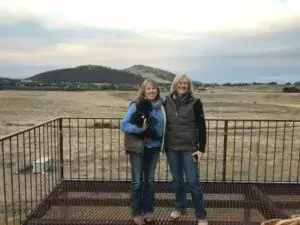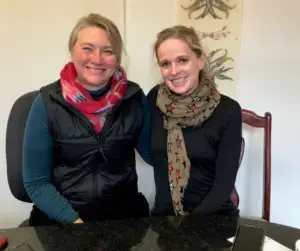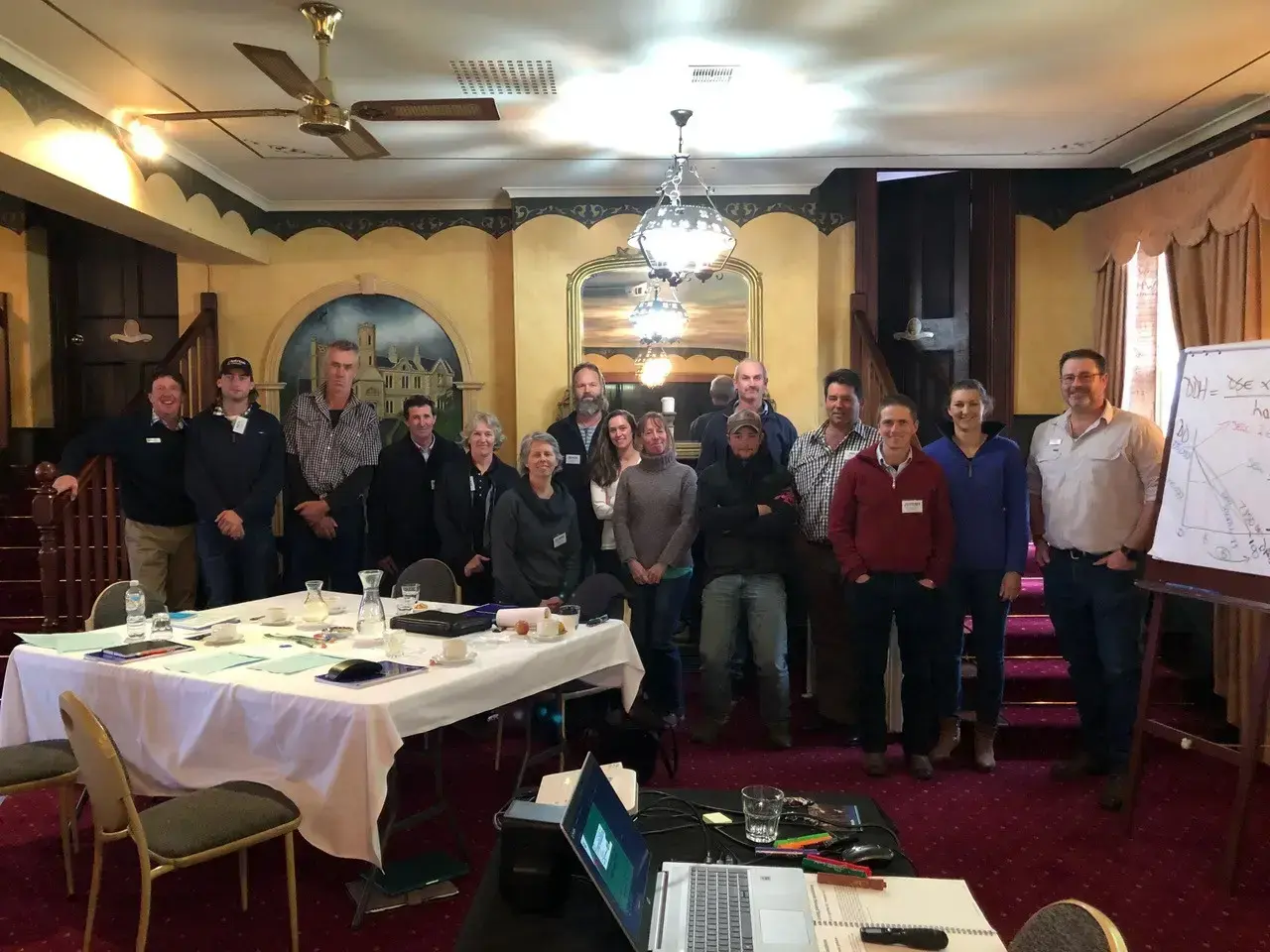This month I spent a week in Tasmania meeting with, and learning from, Tasmanian primary producers who are working to regenerate their soils and landscapes. In particular, I met with key partners in the exciting new project “Drought Resilience Tasmania – Actionable Knowledge and Solutions for Sustainable Prosperity” (known as The Hub), of which Soils for Life is a key partner and which is led by the University of Tasmania.
Professor Kathy Evans, the new director of the project, said The Hub will bring together a broad diversity of organisations and stakeholders in Tasmanian agriculture and natural resource management in a collaborative, co-designed that producers will be equal contributors to the initial program design.
On my way to meet with the team at UTAS, I travelled the length of Tasmania, to experience some of the broad range of enterprises, landscapes, soil types and rainfall which make up agricultural production, which covers approximately 28% of Tasmania’s landmass. I visited a range of producers and experiencing a broad range of locally adapted approaches to regeneration including multi species planting, re-establishing ecological function through tree and understory replanting, time-controlled grazing and biological amendments.
I started in the north, at Sam and Stefanie Tretheway’s (Tasmanian Agricultural Company) farm near Dunorlan (in the Meander Valley – a sub catchment of the Tamar). Sam and Stephanie have recently begun farming here, focusing primarily on first cross Wagyu production, and are working to bring degraded land back to ecological health and productivity. Sam showed us the work he is doing to regenerate his pastures through multi-species plantings and setting up time-controlled grazing. Sam is using a SoilKee to plant into existing pasture to enrich the species mix without leaving bare soil or cultivating.
I visited Sam’s property as part of a 2.5 day RCS (Resource Consulting Services) grazing clinic. RCS’ six principles for regenerative grazing form a solid foundation for decision making in grazing systems and the grazing charts RCS provide are an excellent tool for working out the right balance of carrying capacity to stocking rate, and calculating appropriate rest periods for pasture. The most interesting part of the workshop for me was hearing about the diverse experience and enterprises of the participants. The participants ranged from cut flower growers in the north west (who want to include grazing in their enterprise mix), through Midlands sheep farmers and croppers, to wool, lamb and beef production in the Derwent Valley.

Rae Young with her granddaughter
Next stop was the Midlands property of botanist and sheep farmer Rae Young, and husband Lindsay. Rae’s daughter Colette and her family have recently joined the business. Rae is pictured here with her granddaughter as we toured around the farm looking at Rae’s work trailing native species plantings in cages as well as tree plantings and other restoration and regeneration projects and the new centre pivots.
Rae explained to me that they have newly invested in irrigation, accessing one of the many new irrigation schemes which are being rolled out in Tasmania. Rae, Lindsay and Colette are still figuring out how to adjust and manage time-controlled grazing under irrigation and how best to capitalize on such a significant investment.
As I travelled south, I heard a number of examples of investment in irrigation as a potential adaptation and insurance around increasingly variable rainfall and weather patterns, particularly in the Midlands. Despite “mainlanders’” perceptions of Tasmania as a high rainfall state, the reality is that the distribution of this rainfall is highly uneven and variable, both spatially and temporally.

Novelist and farmer Rachael Treasure with Soils For Life CEO Liz Clarke on the veranda of her shearing shed.
I also had the pleasure of visiting novelist and farmer, Rachael Treasure at her property Ripple Farm, near Richmond. Rachael and her family are implementing a range of regenerative practices on the farm such as natural sequence farming, multi species plantings, and soil biological treatments. Watch this space as Rachael and her partner Dan are restoring their wool shed as a training and workshop centre!
Day 2 of my Tassie regenerative journey started in South Arm looking out of the appropriately named Storm Bay, where I visited Florian Bonenfant’s newly established market garden. First up on the tour, Florian proudly showed me the oldest blue gum in the South Arm area which he is carefully protecting. We then looked into Florian’s shed where I discovered that he is actually the MacGyver of regenerative agriculture! He showed me a range of homemade equipment he has built including seed tray filler, dibbler, vacuum seeder and hot beds, involving second hand household items such as crock pots, vacuum cleaners and ockey straps (not to mention repurposed pallets etc).
Florian’s philosophy of no dig and no expensive chemicals means weed management rather than weed control. The newly planted beds have a cardboard layer to inhibit weed growth, on which wood chips and mushroom mulch has been added and the seeds planted into this. Florian has plans to develop a key line system on his small farm and to add free range chickens and cattle to the mix, along with a large scale worm farm to recycle organic material from the farm to put back into the farm system.
Next stop, wildlife biologist and farmer, Fiona Hume at Arundel Farm, in the Derwent Valley. Fiona produces wool, lamb and beef and runs a herd of heritage English Leicester sheep in the beautiful rich soils of the Valley. Hops are also grown on her farm through a share farming arrangement. Fiona greeted us with a wonderful spread of fresh scones and freshly made blackberry jam. We looked at the many flourishing tree belts that Fiona has planted. She has also included a range of understory plants such as banksias, native grasses etc. Multispecies pasture plantings are also on the agenda this year. Having just completed the RCS – Resource Consulting Services Grazing Clinic, Fiona is working on developing time-controlled grazing as part of her management.

Evie Lazarus and Dr Josie Kelman from the Derwent Catchment Project
My last day in Tasmania I met up with some of the partners in the Hub, including Evie Lazarus and Dr Josie Kelman from the Derwent Catchment Project, and heard about the wonderful work they are doing in soil and landscape restoration the length of the Derwent Valley which is one of the hotspots for soil loss and decline in health.
It was wonderful to meet so many people who are passionate about regenerating soils and landscapes in Tasmania. As I mentioned at the National Press Club Soil Organic Carbon Forum, working collaboratively with producers will be the key to future success in Australia’s soil health. Meeting so many innovative producers and working with the Hub has been very inspiring, and I think there are fantastic things still to come.





